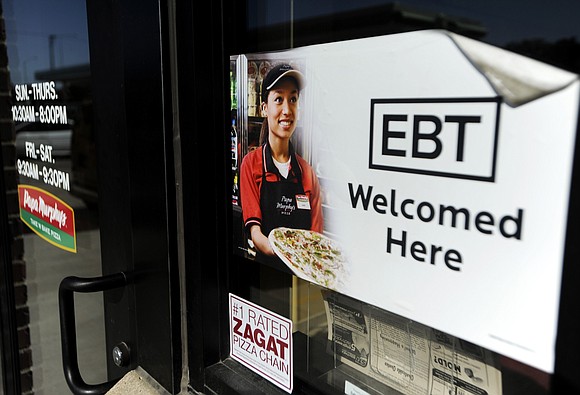Trump plans to make more people work for food stamps
CNN/Stylemagazine.com Newswire | 12/20/2018, 8:50 a.m.

By Tami Luhby, CNN
(CNN) -- If Congress won't make more food stamp recipients work for their benefits, the Trump administration will.
The US Department of Agriculture unveiled a proposed rule Thursday that would expand work requirements in the Supplemental Nutrition Assistance Program, or SNAP, as the food stamp program is formally known. The proposal comes on the same day as President Donald Trump plans to sign a farm bill that had a similar provision that was eventually eliminated
The overhaul marks the administration's latest effort to impose work requirements in government assistance programs. In an unprecedented move, it has started allowing states to mandate that Medicaid recipients find employment. Administration officials point to the nation's low unemployment rate as a reason to push more Americans to self-sufficiency.
"A central theme of the Trump administration has been to expand prosperity for all Americans, which includes helping people lift themselves out of pervasive poverty," said Agriculture Secretary Sonny Perdue, noting it will save $15 billion over 10 years. The proposed rule "restores the dignity of work to a sizable segment of our population, while it's also respectful of the taxpayers who fund the program."
The food stamp program already requires non-disabled, working-age adults without dependents to have jobs. They can only receive benefits for three months out of every 36-month period unless they are working or participating in training programs 20 hours a week.
But states can waive that requirement for areas where unemployment is at least 10% or there is an insufficient number of jobs, as defined by the Department of Labor. Already, some red states, including Kentucky and West Virginia, are phasing out or eliminating their waivers.
The proposed rule would make it harder for states to receive those waivers by tightening the definition of areas where there are insufficient jobs, curtailing states' ability to "bank" exemptions for future years and limiting waivers to only one year instead of up to two, among other changes.
There were 3.8 million Americans who fell into the target category in 2016, the latest federal figure available. Some 2.8 million of them were not working.
The agency's move could result in hundreds of thousands of beneficiaries losing their assistance, according to the left-leaning Center on Budget & Policy Priorities. Typically, one-third of Americans live in an area where the work requirement is waived.
The proposed rule would cut the number of areas with waivers by three-quarters, according to the agency.
Many low-income people can't find a good job with steady hours, even in today's robust economy, said Rachel West, director of poverty research at the left-leaning Center for American Progress. That volatility, combined with the challenge of documenting one's hours, will result in many folks losing their benefits.
"In low-wage jobs, there is significant churn week-to-week, month-to-month, in hours," West said. "So many people cannot control their hours in today's labor market."
The farm bill passed by the House called for many food stamp recipients to be locked out of the program for up to three years if they fail to work or enroll in job training. The legislation would have also expanded the work requirement to those in their 50's to work and extended it to parents with school-age children.
The final version, however, did not contain these changes.



